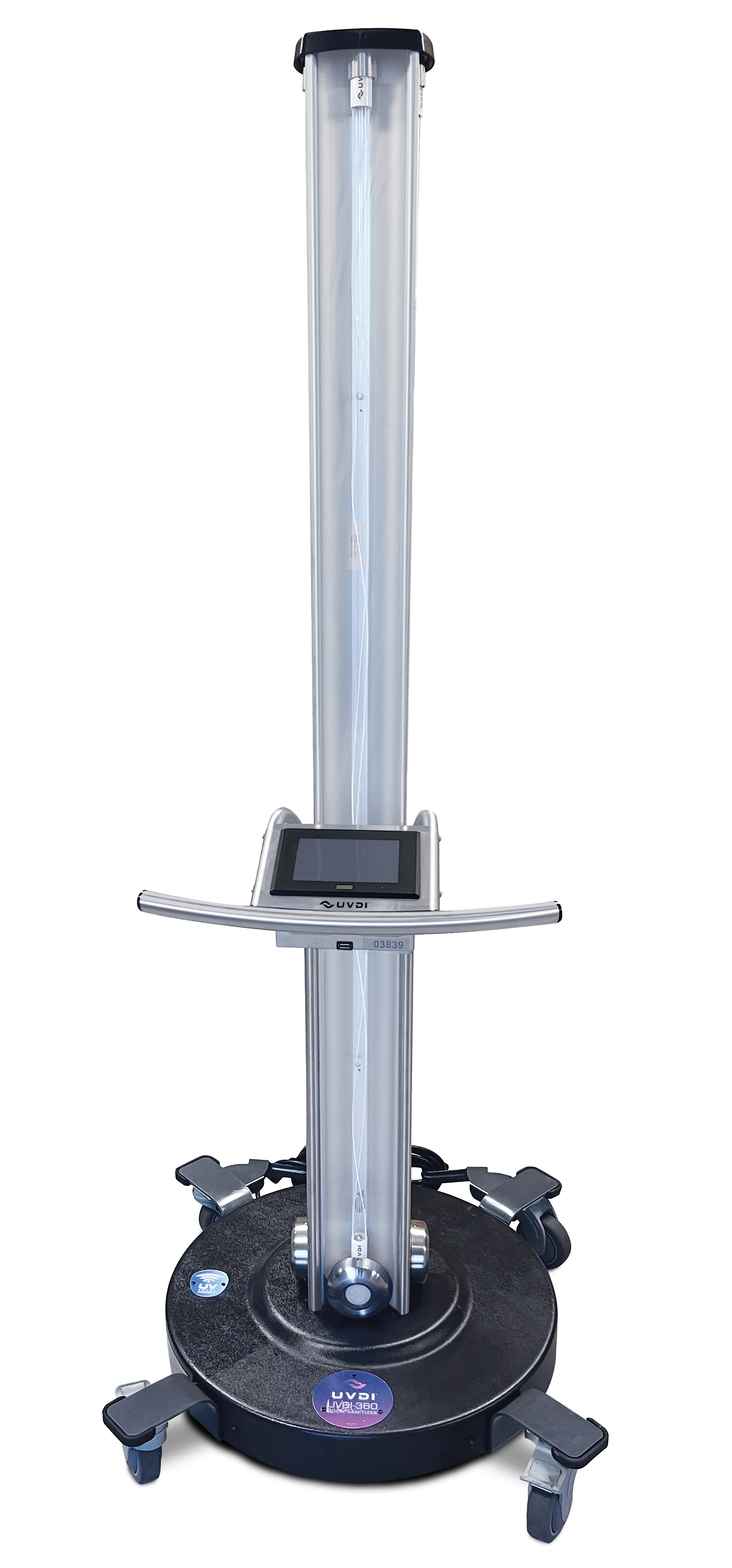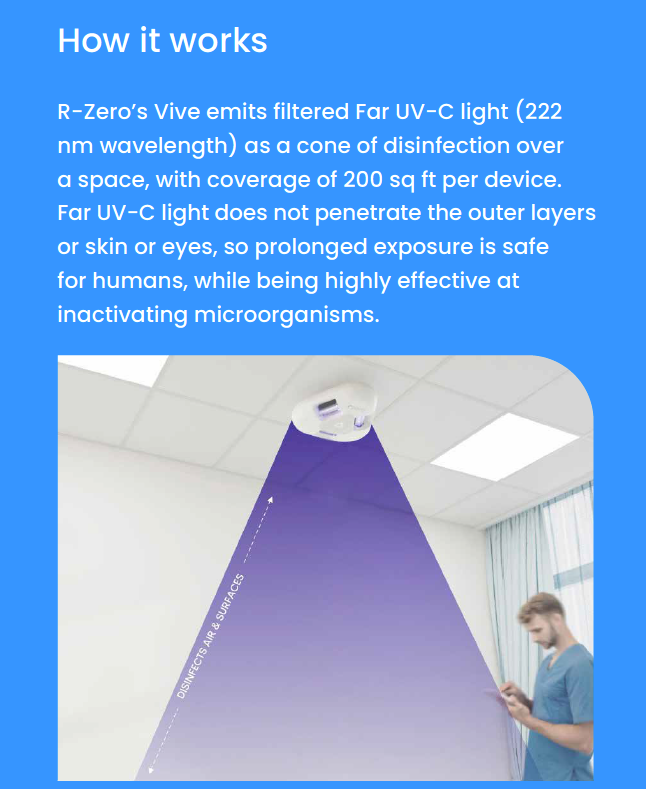Far UVC Light: A Game-Changer in the Battle Against Airborne Pathogens
In the ever-evolving fight versus airborne microorganisms, the development of much UVC light has triggered significant rate of interest and capacity. This innovative technology, using a details variety of ultraviolet light, holds the assurance of transforming just how we fight the spread of hazardous bacteria in various settings. Its unique homes and potential applications have actually gathered interest from researchers, scientists, and public health specialists alike. Yet exactly what is much UVC light, and just how does it function? In this discussion, we will certainly explore the scientific research behind this game-changing modern technology, explore its benefits, and examine its future effects in the recurring fight against air-borne virus.
The Scientific Research Behind Far UVC Light
The scientific concepts underlying the usage of Much UVC light as a possible solution for combating airborne microorganisms are both encouraging and complex. Far UVC light refers to a particular variety of ultraviolet (UV) light wavelengths, typically between 207 and 222 nanometers, which have actually been located to efficiently eliminate or inactivate microbes such as infections and microorganisms. Unlike standard UVC light, which has a much shorter wavelength and is recognized for its germicidal residential properties but can additionally harm human skin and eyes, Far UVC light has actually been revealed to be safe for human direct exposure.
The essential system behind the performance of Far UVC light depend on its capacity to permeate and destroy the hereditary product of microorganisms, including their DNA and RNA. When exposed to Far UVC light, the hereditary product undergoes a process called photodimerization, where nearby bases in the DNA or RNA molecule bind together, stopping replication and rendering the microbe unable to cause or recreate infection.

Just How Much UVC Light Works
Far UVC light runs by using specific ultraviolet wavelengths to properly neutralize microbes and avoid their duplication, making it a promising service for combating air-borne microorganisms. Unlike traditional UVC light, which is harmful to human skin and eyes, much UVC light has shorter wavelengths, usually in the series of 207 to 222 nanometers (nm), that do not penetrate the outer layer of the skin or the tear layer of the eye. This makes it risk-free for constant human direct exposure, while still being dangerous to microorganisms and infections.
The efficiency of far UVC light depend on its ability to damage the dna and pass through and RNA of microorganisms. When subjected to far UVC light, the hereditary product of these microorganisms is harmed, rendering them not able to duplicate and contaminate cells. Additionally, research studies have revealed that far UVC light can efficiently inactivate air-borne viruses, such as flu, measles, and coronaviruses, including SARS-CoV-2, the virus in charge of COVID-19.
Additionally, much UVC light is also with the ability of sanitizing surfaces and items in an encased area. By setting up much UVC lights or making use of mobile far UVC light tools, it is feasible to continually decontaminate the air and surface areas, minimizing the danger of airborne transmission of virus.
Advantages of Far UVC Light
Utilizing much UVC light deals a range of significant benefits in combating air-borne virus and more making certain a safer environment for continual human direct exposure. Among the vital advantages of much UVC light is its capacity to efficiently reduce the effects of different types of unsafe germs, infections, and fungi without triggering harm to humans. Unlike standard UV light, which can be hazardous to human skin and eyes, far UVC light has a much shorter wavelength that enables it to target and destroy virus while presenting very little danger to human health and wellness.

Moreover, much UVC light is much safer for the setting compared to typical disinfection methods. Chemical disinfectants commonly contain dangerous components that can have unfavorable influence on the setting. Much UVC light, on the various other hand, does not create any type of harmful results or residues, making it a more sustainable and green option.
Applications of Far UVC Light
Far UVC light has actually confirmed to be effective in eliminating air-borne pathogens such as viruses, microorganisms, and fungis. Unlike traditional UV light, far UVC light is safe for human direct exposure, making it appropriate for continual use in public rooms such as institutions, healthcare facilities, and offices.
Another application of far UVC light remains in the healthcare market. It can be made use of to decontaminate medical facility rooms, running movie theaters, and medical equipment, minimizing the risk of healthcare-associated infections. In addition, far UVC light can be integrated into a/c systems to purify the air distributing in structures, supplying an included layer of security against air-borne pathogens.
Additionally, far UVC light can be made use of in the food market to prevent foodborne diseases. It can be used to sanitize food handling facilities, eliminating germs and other microbes that may pollute food items.
Future Ramifications of Far UVC Light
The potential future applications of far UVC light are vast and hold assurance for numerous markets and markets. Centers and hospitals could utilize far UVC light to disinfect person spaces, running cinemas, and waiting locations, minimizing the risk of healthcare-associated infections.
Furthermore, making use of far UVC light in public rooms such as airport terminals, train stations, and purchasing malls might aid control the spread of airborne virus. By constantly sanitizing these areas, the threat of transmission could be significantly minimized, offering a safer setting look at here for people.
Another prospective application of much UVC light remains in the food industry. Much UVC light might be used to sanitize food preparation surfaces, packaging products, and storage areas. This can help prevent the contamination of food and lower the incident of foodborne health problems.
Furthermore, much UVC light could be used in heating and cooling systems to sanitize the air circulating in buildings. This could be specifically advantageous in crowded spaces such as offices, movie theaters, and schools, where the danger of air-borne transmission is higher.
Verdict
To conclude, far UVC light has become a game-changer in the fight against air-borne virus. Its one-of-a-kind properties and ability to safely kill germs and infections make it a promising service for numerous applications. From public spaces to medical care setups, much UVC light offers many advantages in reducing the transmission of conditions. With more research study and development, its widespread application might have considerable effects for the future of infection control.
Far UVC light refers to a certain array of ultraviolet (UV) light wavelengths, typically in between 207 and 222 nanometers, which have been located to efficiently eliminate or suspend bacteria such as bacteria and infections. far-uvc. Unlike standard UVC light, which has a much shorter wavelength and is recognized for its germicidal residential or commercial properties but can likewise hurt human skin and eyes, Far UVC light has been shown to be secure for human exposure
Unlike standard UVC light, which is unsafe to human navigate to this website skin and eyes, far UVC light has shorter wavelengths, commonly in the variety of 207 to 222 nanometers (nm), that do not penetrate the outer layer of the skin or the tear layer of the eye. Unlike standard UV light, which can be dangerous to human skin and eyes, much UVC light has a much shorter wavelength that allows it to target and damage microorganisms while presenting very little danger to human wellness.
Unlike standard UV light, much UVC light is secure for human direct exposure, making it suitable for continuous use in public spaces such as schools, health centers, and workplaces.